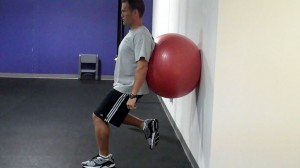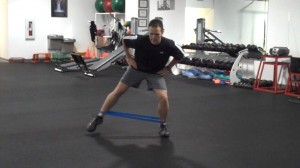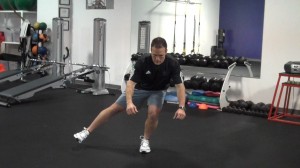If you have been following my blog, you are aware one of my marathoners has been battling increased medial knee pain. I initially suspected and diagnosed it as patello-femoral irritation. I have known she has some chondromalacia (softening or weakening of the cartilage behind the kneecap) ever since I began training her 2 years ago.
I spoke with the MD Thursday and he confirmed by MRI she has no meniscus tear and just patello-femoral arthritis and inflammation. I was relieved to know I had hit the mark (remember the chiro said meniscus tear). The MD I referred my client to wants me to do a specific PF strengthening program with her. The good news – no surgery needed that will derail training for the Columbus Marathon. The bad news – she may have to contend with some discomfort related to the pounding for now.
It is always hard to tell a runner to rest. That is one four letter word that really ticks them off! So, the answer for my client is relative rest (avoiding excess mileage, not running down too many hills, and increasing recovery windows when possible) as well as implementing a more specific PF rehab program.
We have been doing lots of quad (VMO specifically) work and gluteus medius strengthening already. So, what I will be adding or changing? Well, we will be integrating more repetitively the following:
- Weighted straight leg raises in flexion and adduction
- Modified box step-downs in the terminal range of knee extension to emphasize VMO contraction in a closed chain manner
- Modified lunge and squat progressions working around the pain
I will be continuing with single leg strengthening for glutes, hamstrings and quads, while challenging hip stability in the frontal plane as she may be experiencing unwanted force transmission here with impact. Additionally, I will continue with IT band rolling/stretching and hamstring flexibility.
This client is tough and will run through the pain if need be. My job is to reduce and eliminate the pain without taking her running away. That is never easy but it can be done with careful progression of exercise and cooperation from the client. The key point for strength and conditioning specialists is to modify programming based on the client, while the key point for all runners out there is to be open and honest about pain, as well as willing to comply with modifications in the short term training plan to achieve the same long term goal – finishing the race.
Below is a picture of a modified squat progression (an isometric single leg stability ball wall squat/sit). I use this exercise with athletes and runners with patello-femoral pain issues when they can’t squat due to pain. If you want to see exactly how to do this exercise, subscribe to PFP Magazine and read my online column, Functionally Fit, here. My newest column will be out next week and address double and single leg isometric squats for patello-femoral pain.

Shallow Single Leg Wall Sit




